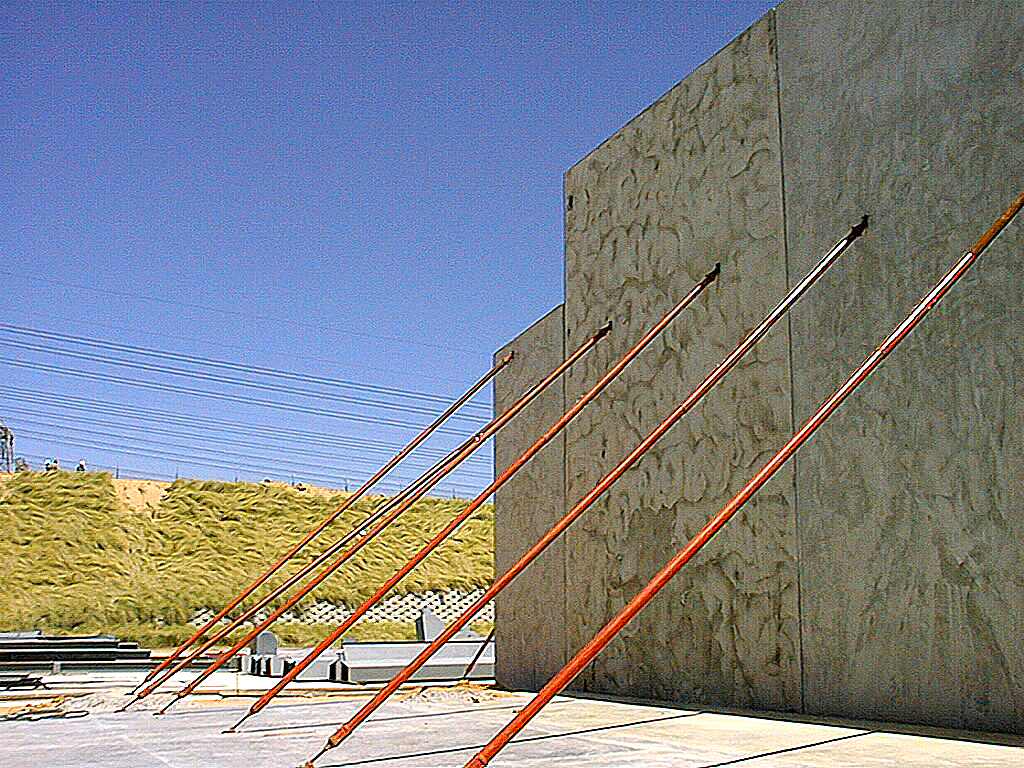
Tilt-up construction, often overlooked in the design of new concrete structures, can be an economical alternative to traditional building materials and does not negatively affect a structure’s looks and durability, says Gary Theodosiou, engineer and lecturer at The Concrete Institute.
Theodosiou says the economic viability of tilt-up/precast construction can be maximised by repetition: repeating identical panels and avoiding differentiation in panel sizing as much as possible. Tilt-up offers cost-savings not only for warehouse construction but also for structural elements such as columns, beams, trusses, slabs and walls where there is sufficient repetition of the building elements.
“For tilt-up construction, the concrete elements are cast on site and lifted into final position. The elements are formed on a concrete slab – usually the building floor, but sometimes a temporary concrete casting surface, near the building footprint. After the concrete has cured, the elements are tilted from horizontal to vertical with a crane and braced into position until the remaining building structural components – such as roofs, intermediate floors and walls – are secured. By forming the concrete elements on the ground and not in their final position, tilt-up provides a significant reduction in man-hours and formwork,” Theodosiou states.
The tilt-up panels – set out according to a predetermined casting layout – span from base to roof diaphragm, act as beams and can carry roof and slab loads. They make up the building façade, structure and final finish in a single operation.
“Once the casting surface or floor slab has cured, forms are built on top. A high-quality plywood or fibre board with at least one smooth face is typically used, but steel forms are also suitable. Carpenters work off engineered drawings designed for each panel or element to construct on site, incorporating all door and window openings, as well as architectural features and other desired shapes that can be moulded into the concrete. Studs, gussets and attachment plates are located within the form for embedding in the concrete. The forms are usually anchored to the casting surface with masonry nails to prevent damage to the floor slab.
“Then, a chemically reactive bond-breaker is sprayed on the forms and casting surfaces to prevent the cast concrete from bonding with the slab. This allows the cast element to separate from the casting surface once it has cured. This is a critical step, as improper chemical selection or application will prevent the lifting of the panels, and may lead to costly demolition and rework,” Theodosiou adds.
A reinforcement grid is constructed inside the forms, after the form release is applied, and spaced off the casting surface to the desired distance with plastic “chairs”. Concrete is then placed, filling the desired thickness and surrounding all steel inserts, embedded features and reinforcement. The forms are removed when the concrete is cured, rigging is attached and a crane then tilts or lifts the panels into place.
“In situations where space is limited, concrete elements can be cast on top of each other, or stack cast. Quite often a separate casting pad is poured for this purpose and removed when the panels are erected.”
Theodosiou says tilt-up does not sacrifice quality for cost but provides a finished product with the strength and durability of reinforced concrete walls while being able to economically achieve aesthetic effects not possible or cost-effective with other methods of construction.
“Tilt-up walls furthermore do not produce substantial waste to dispose of which means lower environmental impact. The walls can be recycled if the building is taken down and reassembled at a new location which also adds to the building method’s sustainability,” Theodosiou comments.
More news
- PART 2: DESIGN AND CONSTRUCTION OF SLAB-ON-GROUND: APPLYING ACI 318
- DESIGN AND CONSTRUCTION OF SLAB-ON-GROUND: APPLYING ACI 318
- DOK-ING’s innovative electric mining equipment unveiled at ElectraMining
- CONCOR’S MASTERY IN FAST TRACK PROJECT IMPLEMENTATION UNDERSCORED BY SAFETY AWARD
- PROMINENT SEA POINT HOTEL REFURBS WITH REHAU

